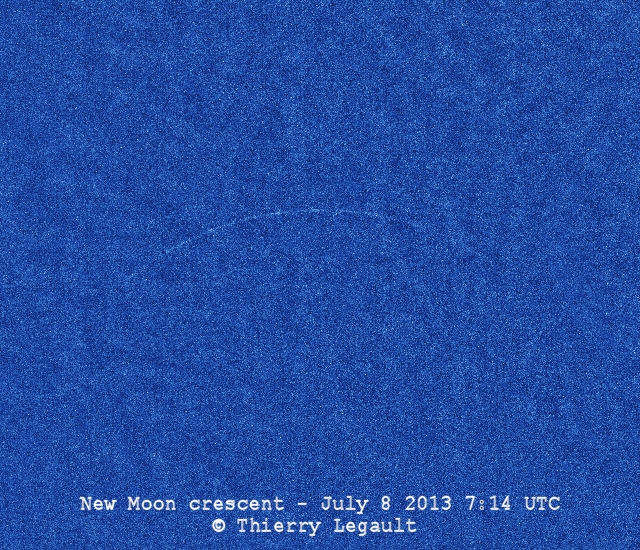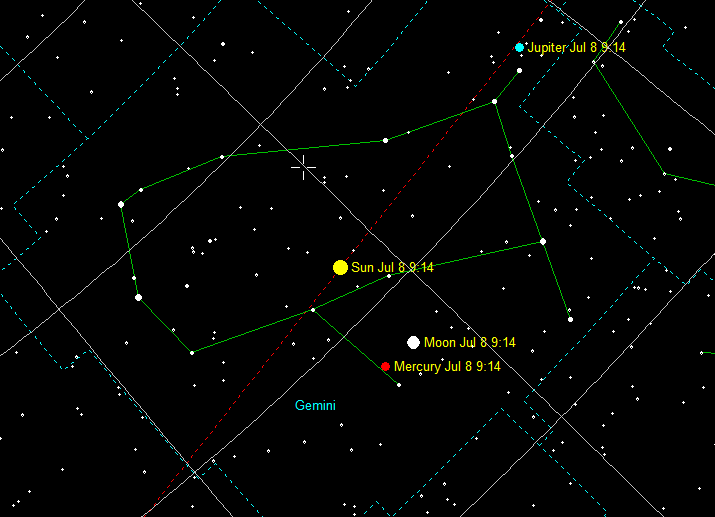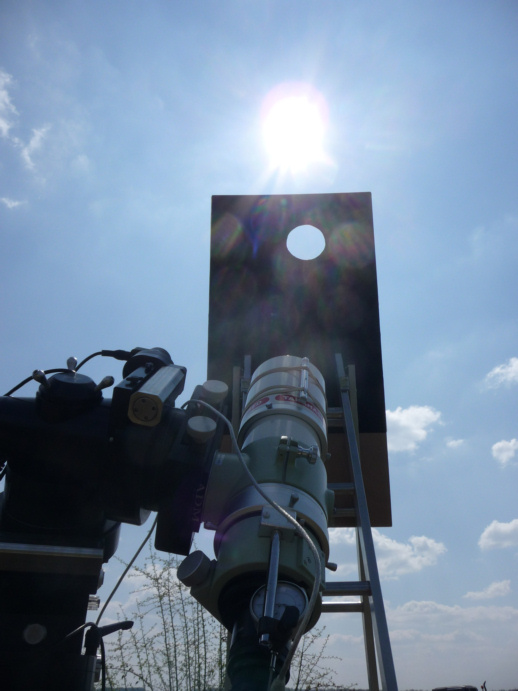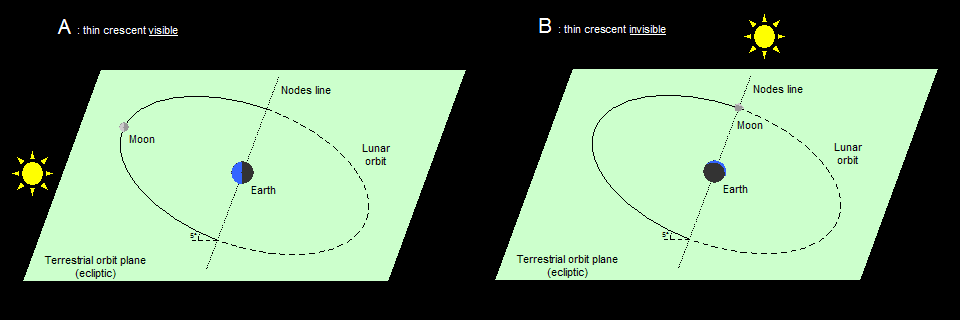
RECORD : THE NEW MOON CRESCENT - JULY 8 2013
|
Any use of one of these images other than strictly private must be subject to prior authorization from legault@astrophoto.fr This image shows the tiny lunar crescent at the precise moment of the New Moon, in full daylight at 7h14min UTC on July 8 2013. It is the youngest possible crescent, the age of the Moon at this instant being exactly zero. Celestial north is up in the image, as well as the Sun. The irregularities and discontinuities are caused by the relief at the edge of the lunar disk (mountains, craters). |

|
This New Moon marks the 2013 Muslim's Ramadan. From the shooting site (Elancourt, France), the angular separation between the Moon and the Sun was only 4.6° (nine solar diameters). At this very small separation, the crescent is extremely thin (a few arc seconds at maximum) and, above all, it is drowned in the solar glare, the blue sky being about 400 times brighter than the crescent itself in infrared (and probably more than 1000 times in visible light). In order to reduce the glare, the images have been taken in close infrared and a pierced screen, placed just in front of the telescope, prevents the sunlight from entering directly in the telescope. The ephemerides have been calculated with the NASA JPL HORIZONS System. |

| Instrumentation: Takahashi FSQ-106ED with focal reducer (D=106mm, F=400mm) on Losmandy Titan German equatorial mount, IDS 3370 monochrome camera (CMOSIS 2048x2048 sensor), low-pass infrared filter 850nm. Processing: combination of 4000 calibrated (flat-field) images, gradient removal by wavelets, contrast/brightness, colorization. The Moon has been pointed with the help of the GOTO system of the mount and tracked at the precise lunar speed calculated for the instant of shooting. |


| Caution ! The very thin crescent of the New Moon
cannot be observed visually whatever the instrument (naked eye, binoculars,
telescope...). Moreover, pointing a celestial object that close to the Sun is
dangerous for the observer and his equipment if it is not performed under the
control of an experienced astronomer and with the proper equipment. Notes on the New Moon and the visibility of the thinnest crescent The Moon, in its orbital movement around the Earth, passes about once a month in the apparent vicinity of the Sun. If the lunar orbit were exactly situated in the same plane as the Earth's one, at each New Moon the three bodies would be aligned and, each month, we would see a total eclipse of the Sun. But the orbit of the Moon is tilted about 5° towards the Earth's orbit, so that at most New Moons, the Moon is seen passing slightly "over" of "under" the Sun and there is no eclipse ( situation "A"). A solar eclipse happens only if the New Moon occurs in the vicility of its nodes (situation "B"), but in this case the thin crescent cannot be photographed. Rigorously, the New Moon is defined as the instant when the ecliptic geocentric longitudes of the Moon and the Sun are equal, that is to say the instant when the imaginary line joining the Moon and the Sun is perpendicular to the ecliptic (the plane of the Earth's orbit). One considers that it is also the instant when their angular separation is minimum. |
